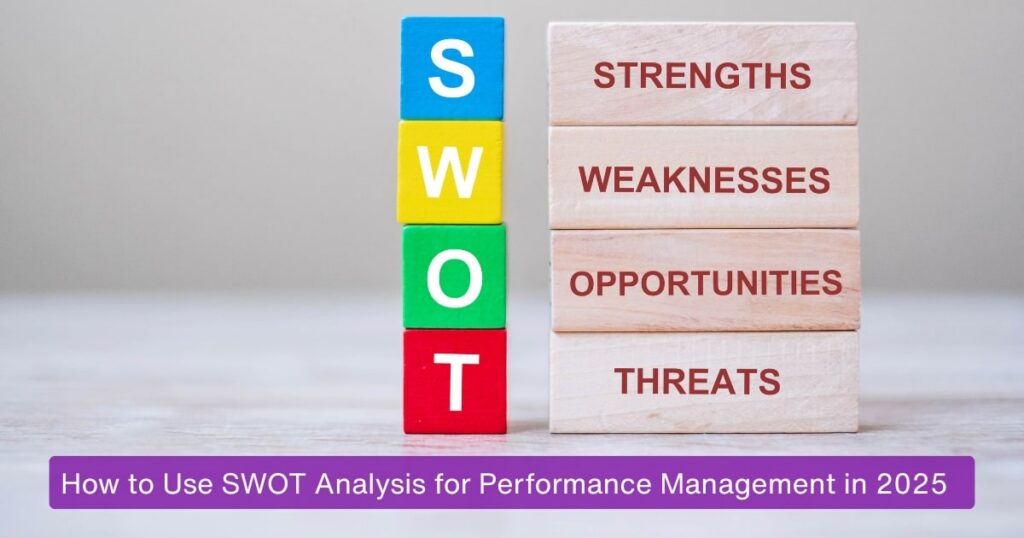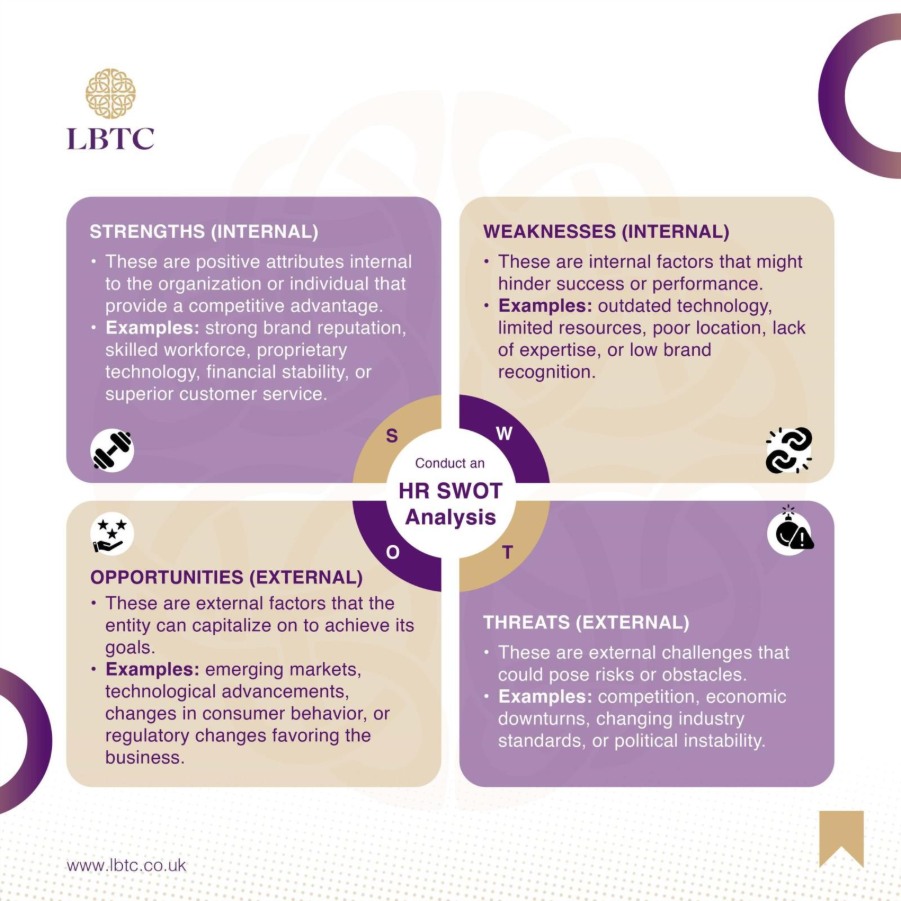
In 2025, performance conversations require more than a gut feeling; they need a clear, shared lens. SWOT analysis stands for Strengths, Weaknesses, Opportunities, and Threats. It helps managers and teams link daily tasks with their strategy.
In a performance management training, SWOT helps leaders quickly understand the situation. It enables them to set clearer goals and turn reviews into actionable steps.
Utilising a SWOT assessment can help enhance your performance management. It works for team leaders, operations managers, and data analysts. This method enhances alignment, focus, and measurable results.

Step-by-Step: How to Apply SWOT Analysis to Performance Management
1. Define Clear Objectives
Begin by defining what success means for your team or department. Objectives could be to enhance productivity or efficiency or to avoid delays.
2. Conduct the SWOT
Engage employees in open discussions to identify:
a. Strengths: What are we doing well? What resources or skills do we have as competitive advantages?
b. Weaknesses: Where are we falling short? Which processes or behaviours should we address?
c. Opportunities: What trends, tools, or new skills can we leverage to improve performance?
d. Threats: What risks or challenges could slow down progress or affect motivation?
3. Link SWOT Results to KPIs
Each SWOT factor should connect to a measurable KPI. For example:
a. Strengths: Maintain a customer satisfaction level of 90% or more.
b. Weaknesses: Reduce project delays by 20%.
c. Opportunities: Enrol in a performance management training for leadership skills.
d. Threats: Uncovered core skills gaps through quarterly training.
4. Create a Performance Action Plan
Utilise a SWOT analysis to develop a performance development strategy. Allocate responsibilities, set deadlines, and define achievable outcomes for each target. Review results frequently, also to inspect progress.
The Role of SWOT in Modern Performance Management
It’s 2025, and performance management frameworks are agile, data-driven and developmental. SWOT analysis adds to this evolution. It transforms reviews into simple and repeatable routines that help people grow and the business improve.
How SWOT helps:
- Encourages regular feedback and regular check-ins between managers and employees.
- Ground decisions in data, performance evaluation, and key performance indicators (KPIs).
- Aligns individual employee growth with business strategy and strategic planning.
- Promotes transparent, fair, and engaging review cycles that encourage employees to participate.
- Fosters continuous learning, targeted career pathing, and more effective alignment with the company’s changing products or services.
Common Mistakes to Avoid
- Doing SWOT once a year – Revisit quarterly to stay relevant.
- Ignoring data – Support every point with measurable performance metrics.
- Focusing only on weaknesses – Celebrate and build on strengths too.
- Not acting on results – SWOT must lead to a specific action plan.
Conclusion:
Using SWOT analysis in performance management enables managers to make a tangible impact. It lets teams see what drives results, what holds them back, and where to focus next. In a world full of AI, change, and learning, this method adds structure and clarity to growth.
You can use SWOT analysis in your next review. Then, improve those skills with targeted performance management training. This will help you link strategy to action and enhance performance.
So, how will you enhance your performance management strategy with a SWOT analysis this year? – Share your thoughts or experiences in the comments below.
You can also consider enrolling in a performance management training course. This can help you improve your skills. This is your first step to creating a smarter, more accountable team.
FAQs:
1. What is the role of SWOT analysis in performance management?
It helps managers assess how a team or individual performs. They can look at strengths, weaknesses, opportunities, and threats.
2. How often should a SWOT analysis be conducted in performance management?
You should complete it once a quarter or with every review cycle to stay relevant to changing objectives and goals.
3. Can SWOT improve leadership development?
Yes, it identifies leadership strengths and training gaps, guiding the development of targeted plans.
4. Why combine SWOT analysis with a performance management course?
Courses provide practical tools and frameworks to apply SWOT effectively in real scenarios.
5. What’s the most prominent mistake managers make with SWOT?
Using it as a list instead of a roadmap, SWOT must lead to specific actions and measurable results.

Leave a Reply